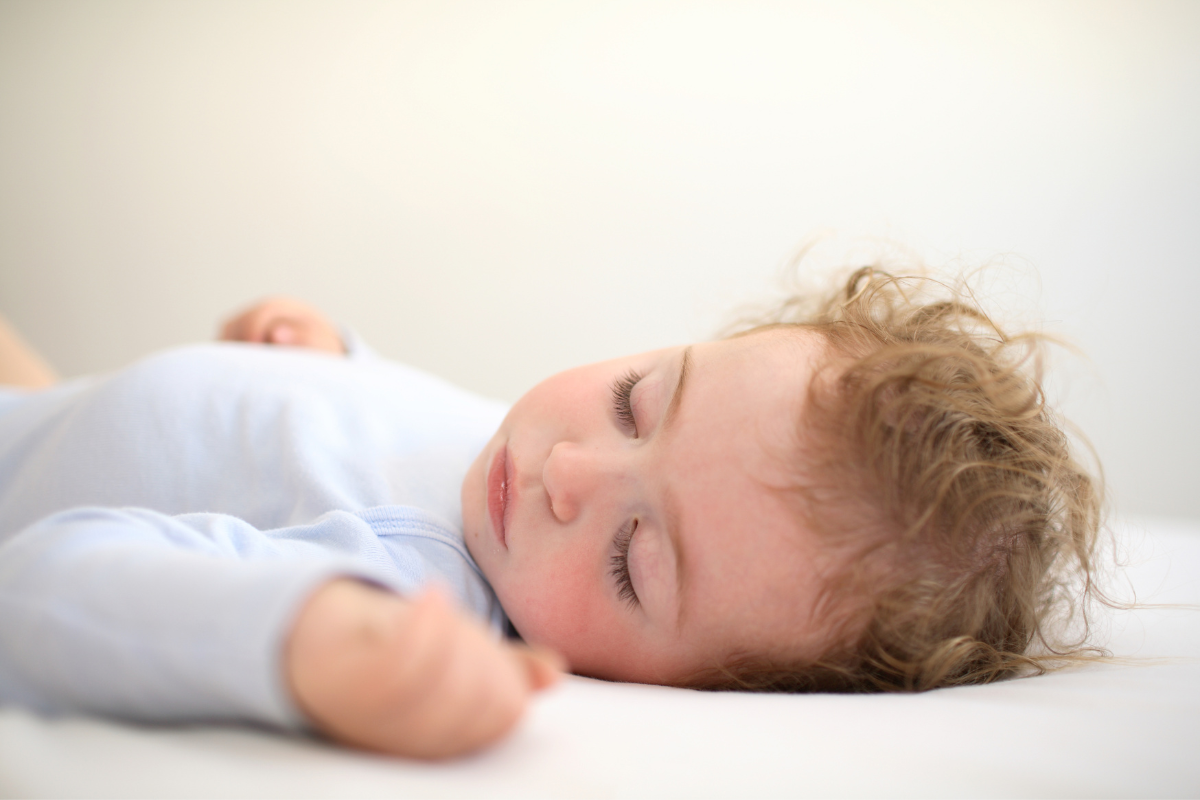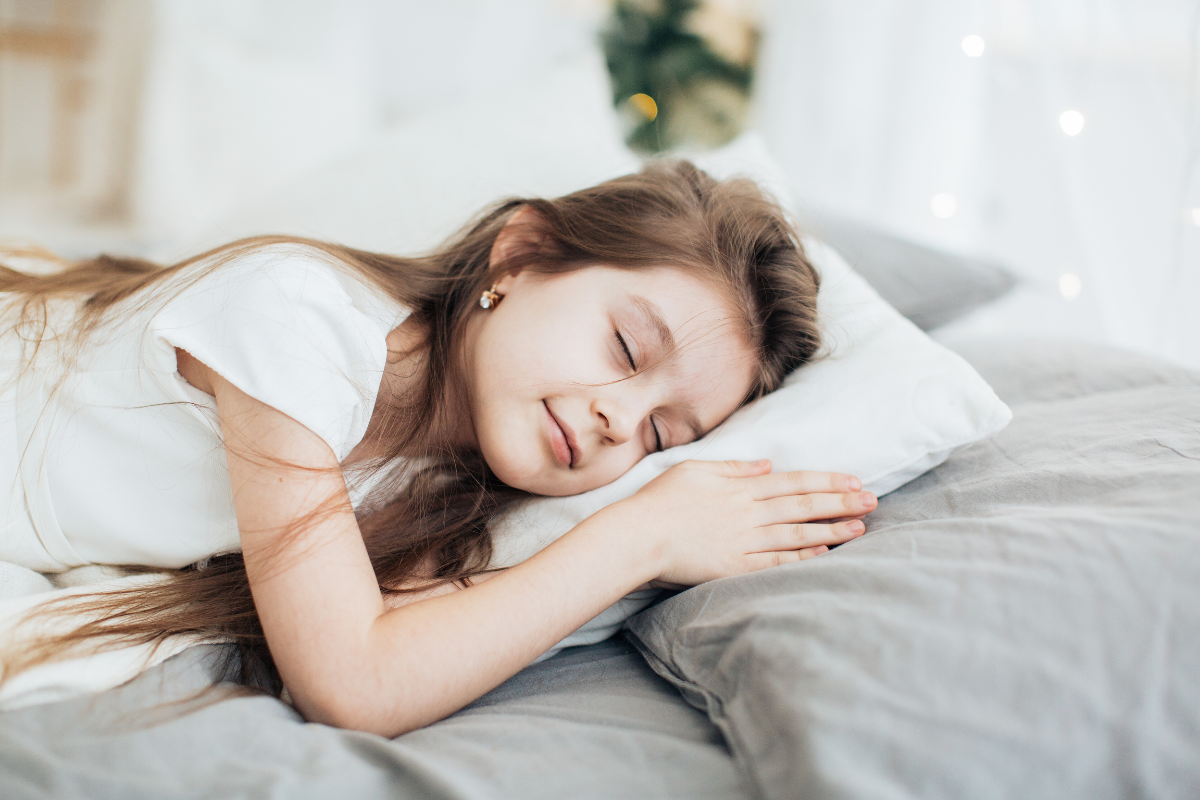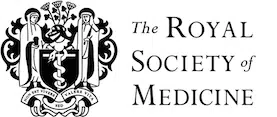Sleep apnoea is a condition that many people associate with adults, often linked to snoring and obesity. However, it’s essential to recognize that sleep apnoea in children and even baby sleep apnoea are growing concern. These conditions, though often overlooked, can have significant effects on a child’s health, development, and overall well-being. Understanding obstructive sleep apnoea in children and the symptoms that come with it is crucial for parents and caregivers, as early intervention can prevent long-term complications.
What Is Sleep Apnoea and Why Does It Affect Children?
Sleep apnoea is a disorder where a person’s breathing stops and starts repeatedly during sleep. The most common form of sleep apnoea is obstructive sleep apnoea in children (OSA), which occurs when the airway is partially or completely blocked during sleep. The condition leads to pauses in breathing that can last from a few seconds to over a minute, disrupting the natural sleep cycle and leading to poor-quality rest.
While sleep apnoea in children is often less discussed than in adults, it’s a condition that should not be underestimated. In children, obstructive sleep apnoea can interfere with essential stages of growth and development, affecting cognitive function, behavior, and physical health.
Why Is Sleep Apnoea in Children Different from Adults?
Unlike in adults, where sleep apnoea is commonly linked to obesity and age-related changes in the airway, sleep apnoea in children is often caused by a variety of other factors. These may include enlarged tonsils and adenoids, nasal allergies, or even anatomical features like a small jaw or tongue. Additionally, children’s airways are smaller and more sensitive, making them more prone to obstruction during sleep.
For babies, sleep apnoea baby symptoms are typically more difficult to identify, as their breathing patterns naturally differ from older children and adults. This is why baby sleep apnoea can be harder to diagnose in its early stages. However, with the right knowledge, parents can spot the signs early and seek appropriate treatment before complications arise.
Identifying Sleep Apnoea in Children: Common Symptoms
Recognizing the signs of this condition can sometimes be tricky, as many of the symptoms overlap with typical childhood behaviors. Nevertheless, parents and caregivers should look for certain signs that may indicate the presence of the condition. There are common obstructive sleep apnoea children symptoms.
Loud Snoring
Loud snoring, especially if it is intermittent and interrupted by pauses in breathing, is a key indicator of sleep apnoea. While occasional snoring can be normal, children who snore consistently—especially with breaks in between—may be suffering from obstructive sleep apnoea.
Breathing Pauses During Sleep
One of the most telling signs of obstructive sleep apnoea in children is the presence of breathing pauses. These pauses can last for several seconds, and children may snore loudly before or after the pause. Parents may notice that their child seems to stop breathing briefly in the middle of the night.
Restless Sleep
Children with sleep apnoea often have difficulty staying in one position during sleep. They may toss and turn frequently, struggling to get comfortable and stay asleep. This can lead to more frequent night wakings and difficulties transitioning through sleep cycles.
Excessive Daytime Sleepiness
Children who are not getting restorative sleep due to sleep apnoea may experience extreme daytime fatigue. They may be unusually irritable, tired, or have trouble focusing at school or during play. Sleep apnoea can significantly impact a child’s energy levels, leading to problems with concentration, mood swings, and even hyperactivity.
Difficulty Breathing Through the Nose
If a child has trouble breathing through their nose during the day or appears to be mouth breathing frequently, it could be a sign of obstructive sleep apnoea. Blocked nasal passages, often due to allergies or enlarged tonsils and adenoids, can contribute to the disease.
Snoring and Gasping for Air
Another common symptom of sleep apnoea baby manifestations includes episodes where babies snore or gasp for air during sleep. This can be particularly concerning in infants, as it may indicate an underlying issue with their respiratory system.
 What Causes Sleep Apnoea in Children?
What Causes Sleep Apnoea in Children?
The causes of this disease are often different from those seen in adults. Let’s discover the most common causes of obstructive sleep apnoea children.
1. Enlarged Tonsils and Adenoids
One of the most common causes of obstructive sleep apnoea in children is enlarged tonsils and adenoids. These tissues are located at the back of the throat and help with immunity. However, if they become enlarged due to infection or other factors, they can block the airway, leading to breathing problems during sleep.
2. Allergies and Sinus Problems
Allergies that affect the nasal passages, such as those caused by pollen, dust, or pet dander, can contribute to sleep apnoea baby symptoms by causing inflammation and congestion in the airways. This leads to difficulty breathing, which can worsen during sleep, resulting in apnoea episodes.
3. Obesity
While less common in children than in adults, obesity can still contribute to the development of sleep apnoea in children. Excess fat around the neck and throat can obstruct the airways, making it difficult to breathe properly while sleeping.
4. Premature Birth
Babies born prematurely are at higher risk for developing sleep apnoea. This condition is often referred to as “apnoea of prematurity” and occurs when a premature infant’s brain is not fully developed, leading to irregular breathing patterns during sleep.
5. Facial and Airway Abnormalities
Some children may have anatomical abnormalities that make them more prone to sleep apnoea in children. These can include a small jaw or a large tongue that obstructs the airway during sleep.
6. Genetics
Certain genetic factors, including family history, can increase the likelihood of a child developing obstructive sleep apnoea children. If a parent has had sleep apnoea, their child may be at higher risk for the condition.
Diagnosis of Sleep Apnoea in Children
If you suspect that your child may have this disease, it’s essential to consult with a healthcare provider who can perform a thorough evaluation. The doctor may recommend a sleep study, also known as polysomnography, which measures various body functions during sleep, such as breathing patterns, heart rate, and brain activity. This test can provide a comprehensive understanding of the severity of the condition and help guide treatment decisions.
For babies, sleep apnoea baby symptoms can be monitored closely at home, and pediatricians may recommend using home monitoring devices that track the baby’s breathing and heart rate during sleep. In some cases, if the problem is severe, the doctor may refer you to a sleep specialist.
 Treatment Options for Sleep Apnoea in Children
Treatment Options for Sleep Apnoea in Children
Fortunately, there are effective treatments available for children with obstructive sleep apnoea in children. Treatment depends on the severity of the condition, the underlying cause, and the child’s age and overall health.
Tonsillectomy and Adenoidectomy
In many cases, the best treatment for children with obstructive sleep apnoea children caused by enlarged tonsils and adenoids is to remove these tissues through surgery. This procedure is highly effective in improving airflow and reducing sleep apnoea episodes.
Medications
If allergies or sinus problems are contributing to the sleep apnoea baby symptoms, medications such as antihistamines or nasal corticosteroids may be prescribed to reduce inflammation and congestion in the airways.
Lifestyle Changes
In cases where obesity is a factor, lifestyle changes such as improving diet and increasing physical activity may help alleviate symptoms of sleep apnoea in children. A weight loss plan should be discussed with a pediatrician to ensure it’s appropriate for your child’s health.
Monitoring and Support
For infants and young children, monitoring during sleep is crucial, and parents should work closely with their healthcare provider to ensure their child receives the support they need. Home monitoring devices may be used to track the child’s breathing, and regular check-ups are essential to ensure the condition is well managed.
Sleep apnoea in children is a condition that requires attention, as it can significantly impact a child’s health and development. Recognizing the symptoms of obstructive sleep apnoea in children early on can lead to better outcomes and improved quality of life for both children and parents. Whether it’s snoring, restless sleep, or daytime fatigue, these signs should never be ignored. Consult Dr. Aditi Desai to assess the situation and explore appropriate treatments, ensuring your child gets the restful, restorative sleep they need to grow, learn, and thrive.







